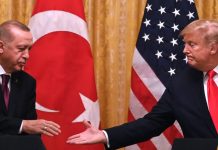The August 29 US airstrike in Kabul killed 10 civilians including seven children, but not any members of the ISIS-K terror group (Islamic State Khorasan Province), Central Command head General Kenneth McKenzie said during a press briefing at the Pentagon.
“I am now convinced that as many as 10 civilians, including up to seven children, were tragically killed in that strike. Moreover, we now assess that it is unlikely that the vehicle and those who died were associated with ISIS-K or were a direct threat to US forces,” McKenzie said on Friday.
McKenzie said that in the 36 hours preceding the strike, the US military commanders on the ground received over 60 pieces of intelligence which pointed to imminent threats to the American forces at Kabul airport.
A white Toyota Corolla was the most recurring aspect of the intelligence that described the car as a key element in the next attack but this appeared to be wrong.

The US Defense Secretary Lloyd Austin in a statement on Friday has offered condolences to the family members of those who were mistakenly killed in the drone attack, including Zamarai Ahmadi, who worked for humanitarian organization Nutrition and Education International. He added that the investigation has not found any link between Ahmadi and ISIS-K.
The head of the Pentagon has also initiated a review of the completed investigation into the drone attack that was conducted by US Central Command, the statement said.
On August 29, two days after an explosion at the Kabul airport took the lives of 13 American soldiers and dozens of Afghan citizens, the US carried out an airstrike targeting terrorists in a car, which was reportedly carrying explosives and posed an immediate threat to the airport.
Although the US military originally reported no casualties apart from two terrorists in the car, the US media said the airstrike actually killed around ten innocent Kabul residents.
On September 11, the New York Times identified the target of the US drone strike as Zemarai Ahmadi, an electrical engineer for the US non-governmental organization Nutrition and Education International.
When asked about the fresh evidence published by The New York Times, Pentagon spokesperson John Kirby said the strike was based on “good intelligence.”
The timing of the tragic error comes as The White House has been under fire for its handling of the Afghan exit and poorly planned evacuation of Kabul, which some experts likened to the United States’ final moments in Saigon, when the Vietnam War ended.




